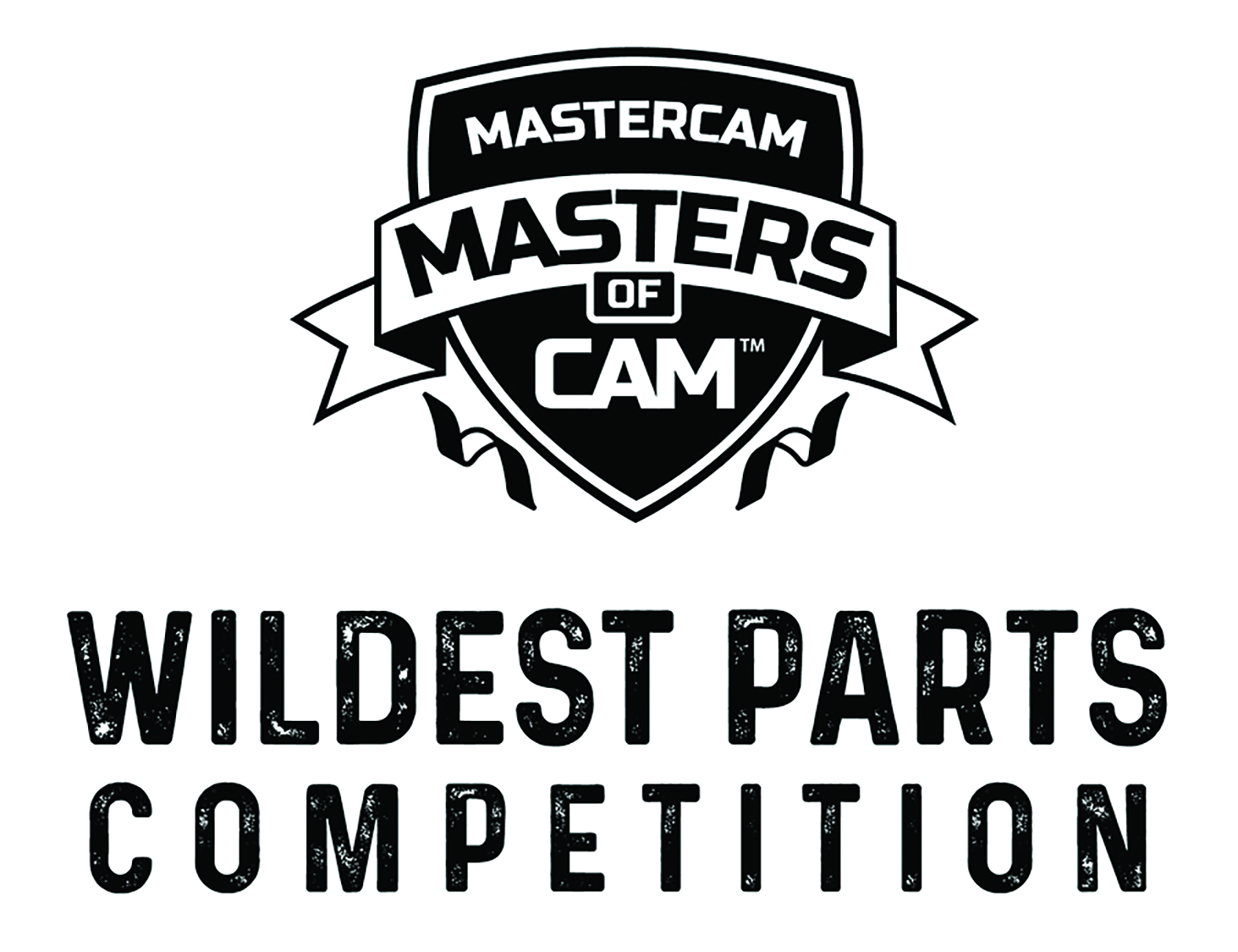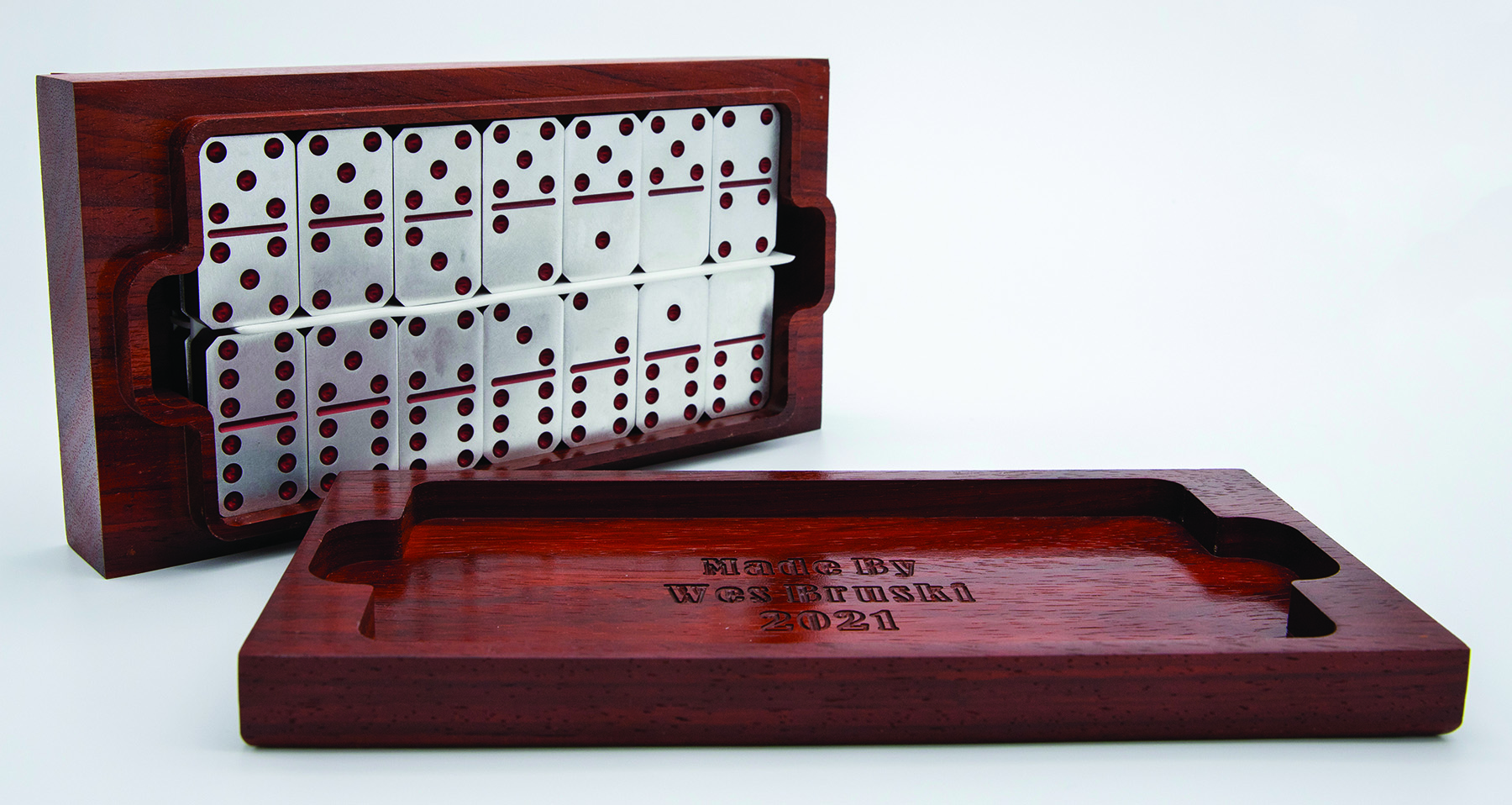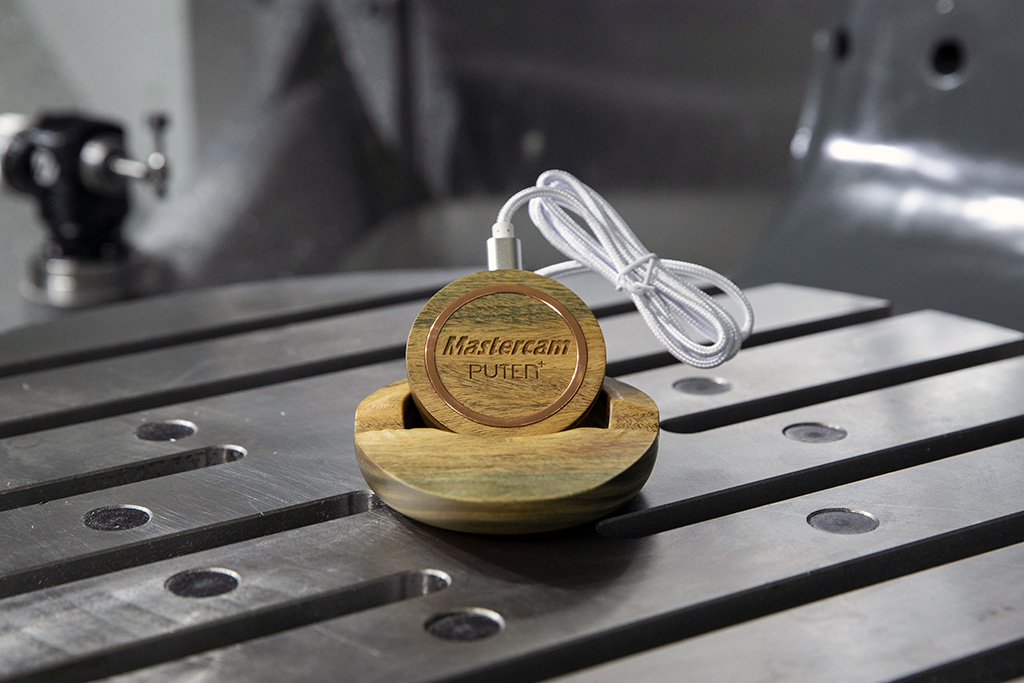
TOLLAND, Conn. — Mastercam announced the winners of its 2021 Wildest Parts Competition, and the winners ranged from unique wood products to sophisticated metalworking projects.
The Wildest Parts Competition is held each year to encourage student interest and participation in manufacturing. The competition is open to students at the secondary and postsecondary levels to create parts demonstrating creativity and technical skill using Mastercam. The Wildest Parts Competition also has a division for professional Mastercam users to enter parts they created.
“We always look forward to seeing all the entries we receive for Wildest Parts,” said Peter Mancini, product manager, Education at Mastercam. “There are so many talented and dedicated teachers, and the quality and originality of their students’ work with Mastercam are inspiring.”
 In the Secondary Division, the winner was Wes Bruski from Capital High School, Montana, who submitted a domino and dice cup game set. Bruski and his family have always enjoyed games, so he had the idea to make a custom set of dominos and dice cup. Bruski lmade the prototypes out of wood, then machined the final set. He said he enjoyed every second of this project and learned so much about machining throughout the process. Second place went to Cadogan Wheat from Hamilton High School, Montana, who designed a model of a padlock.
In the Secondary Division, the winner was Wes Bruski from Capital High School, Montana, who submitted a domino and dice cup game set. Bruski and his family have always enjoyed games, so he had the idea to make a custom set of dominos and dice cup. Bruski lmade the prototypes out of wood, then machined the final set. He said he enjoyed every second of this project and learned so much about machining throughout the process. Second place went to Cadogan Wheat from Hamilton High School, Montana, who designed a model of a padlock.
In the Postsecondary Division, Gus Bronk from Washington State University submitted a keyboard. Bronk wanted to design and machine a unique keyboard from exotic materials. The main case is machined from a Boeing Surplus Forged billet of 2000 series aluminum from the 1970s! This project contained the largest single part and the most parts he has ever machined and assembled. He learned a lot more features in Mastercam while making this part. Jim Courtney from Erie Community College, New York, placed 2nd with a working carousel, and Jonathan Hughes from Erie Community College came in 3rd with a marble machine.
In the Teams Division, Wrindy Hauser’s team from Grand Rapids Community College, Michigan submitted Thor’s hammer. The team members belong to a machinist apprenticeship program at GRCC. In making Thor’s hammer, they said they wanted to make something that gets people excited about machining. When anyone looks at their project, they are going to think it’s awesome and want to learn how to make it. Jiao-Hao Wun’s teammates from Vanung University, Taiwan, placed 2nd with their modern museum. Ming-Yang Chen’s team from Vanung University placed 3rd with their robot.
 In the Professional Division, Andy Beach from Grand Rapids Community College submitted Ironman, which was created to test out a brand new UMC 500 Haas Mill where Beach works. The machine was the first 5- axis machine installed at Grand Rapids Community College. Beach wanted to give the machine a thorough test by machining a multiaxis part that would push the size constraints of the machine. David Berry from Southwestern Illinois College placed 2nd with a dodecahedron of Mastercam toolpaths, and PUTEN PLUS came in 3rd with a wireless charging disc.
In the Professional Division, Andy Beach from Grand Rapids Community College submitted Ironman, which was created to test out a brand new UMC 500 Haas Mill where Beach works. The machine was the first 5- axis machine installed at Grand Rapids Community College. Beach wanted to give the machine a thorough test by machining a multiaxis part that would push the size constraints of the machine. David Berry from Southwestern Illinois College placed 2nd with a dodecahedron of Mastercam toolpaths, and PUTEN PLUS came in 3rd with a wireless charging disc.
Every participant receives a Mastercam t-shirt, and the winning entrants receive cash awards, certificates, and other prizes for entering the competition.
Even as this year’s winners are announced, it’s time for teachers, students, and professionals to start thinking about what they will submit for the 2022 Wildest Parts Competition.
For more information on Mastercam’s Wildest Parts Competition, please visit https://www.mastercam.com/en-us/Competitions/WildestParts.
Contact Details
Related Glossary Terms
- metalworking
metalworking
Any manufacturing process in which metal is processed or machined such that the workpiece is given a new shape. Broadly defined, the term includes processes such as design and layout, heat-treating, material handling and inspection.
- milling machine ( mill)
milling machine ( mill)
Runs endmills and arbor-mounted milling cutters. Features include a head with a spindle that drives the cutters; a column, knee and table that provide motion in the three Cartesian axes; and a base that supports the components and houses the cutting-fluid pump and reservoir. The work is mounted on the table and fed into the rotating cutter or endmill to accomplish the milling steps; vertical milling machines also feed endmills into the work by means of a spindle-mounted quill. Models range from small manual machines to big bed-type and duplex mills. All take one of three basic forms: vertical, horizontal or convertible horizontal/vertical. Vertical machines may be knee-type (the table is mounted on a knee that can be elevated) or bed-type (the table is securely supported and only moves horizontally). In general, horizontal machines are bigger and more powerful, while vertical machines are lighter but more versatile and easier to set up and operate.
